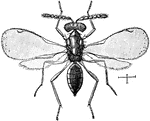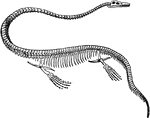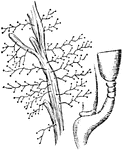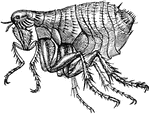
Assassin Bug
Ectrichodia cruciata is a species of assassin bugs in the Hemiptera order of true bugs.

Elephantfish
The Elephantfish (Callorhinchus callorhynchus) is a species of fish in the Chimaeriformes order of chimaeras.
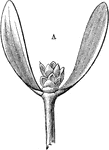
Mistletoe Flower
An illustration of the flower of the mistletoe plant. Mistletoe is the common name for a group of hemi-parasitic…

Mistletoe Staminate
An illustration of one staminate flower in section, magnified twelve times. Mistletoe is the common…
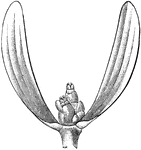
Pistillate Flowers of Mistletoe
An illustration of pistillate flowers of mistletoe. Mistletoe is the common name for a group of hemi-parasitic…
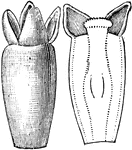
One Pistillate Flower of Mistletoe
An illustration of one pistillate flower of mistletoe. Mistletoe is the common name for a group of hemi-parasitic…
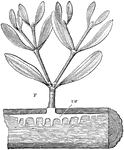
Mistletoe Attached to Host Plant
An illustration of a mistletoe plant attached to the host plant. Mistletoe is the common name for a…
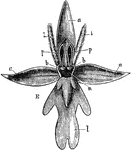
Fly Orchid
Fly orchid (Ophrys insectifera) is a plant of the family Orchidaceae, a native of the British Isles…
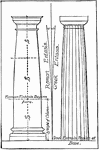
Entasis
"In architecture, the swelling or outward curve of the profile of the shaft of a column. Entasis. e…

Erechtheum
"The 'house of Erechtheus'; a temple of Ionic order on the Acropolis of Athens, noted as one of the…

Phagiochila
Plagiochila is a large, common, and widespread genus of liverworts in order Jungermanniales. It is a…
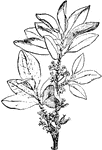
Coca
The flowering branch of the coca plant (Erythroxylon coca) best known for its use in the drug cocaine.

Coca Leaf
The leaf of the coca plant (Erythroxylon coca) best known for its use in the drug cocaine.
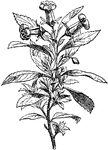
Escallonia
"Escallonia macrantha. Escallonia is a South American genus of trees or shrubs, of the natural order…

Noctilucales
An illustration of Noticulales with buds. The Noctilucales are a peculiar order of marine dinoflagellates.…
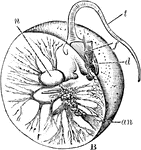
Noctilucales
An illustration of Noticulales in section: an, anus; d, denticle; f, flagellum; t, tentacle. The Noctilucales…

Noctilucales
The Noctilucales are a peculiar order of marine dinoflagellates. They differ from most others in that…

Napier's Right Spherical Triangle
Illustration of a right spherical triangle and the five circular parts placed in the sectors of a circle…
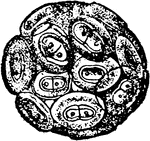
Coccolithophora
A mass of coccoliths; a marine pelagic plant of low order covered with calcereous plates. A coccolithophore…

Medusa of a Hydroid
Colonial, plant-like animals closely related to jellyfish, with stinging cells, Any member of the invertebrate…
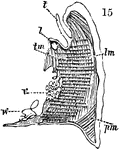
Perpendicular Section of a Sea Anemone
An perpendicular section of a sea anemone. Sea anemones are a group of water dwelling, predatory animals…
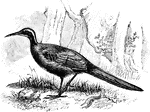
Malaysian Rail Babbler
The Malaysian Rail Babbler (Eupetes macrocerus) is a songbird in the Passeriformes order.

Pay Roll
An accountant's sheet of payroll with employee names, hours per day, and pay rate. "Wages are usually…

Bank Draft
"A bank draft is an order written by one bank directing another bank to pay a specified sum of money…

Personal Check
"A check is an order on a bank by a depositor for the payment of money; except that it is drawn by a…
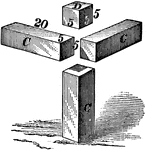
Cube with Additions 2
In order to fill in the spaces from the three 2000 cubic inch additions, four new additions must be…

Fairy Shrimp
The Fairy Shrimp (Branchipus diaphanus) is a species of crustacean belonging to the Anostraca order.

Feloher from Nineveh
"One of an order of beings, the life-principles or geniuses or tutelary spirits of living beings, believed…
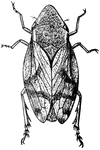
Dorsal View of Froghopper
Aphrophora quadrangularis is a species of Froghopper, an insect in the order Hemiptera.
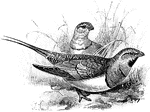
Pin-Tailed Sandgrouse
The Pin-Tailed Sandgrouse (Pterocles alchata) is a bird in the Columbiformes order.

Northern Gannet
The Northern Gannet (Morus bassanus) is a bird in the Pelecaniformes order of waterbirds. It was once…

David Glasgow Farragut
David Glasgow Farragut (July 5, 1801 – August 14, 1870) was a flag officer of the United States…

Order of the Garter Star
The star of the Order of the Garter. "Order of the Garter, the highest order of knighthood in Great…

Order of the Garter Collar
The collar of the Order of the Garter. "Order of the Garter, the highest order of knighthood in Great…
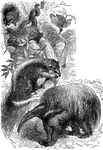
Anteaters
Anteaters are the four mammal species of the suborder Vermilingua commonly known for eating ants and…
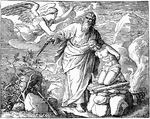
Abraham Offering Isaac
"And they came to the place which God had told him of; and Abraham built an altar there, and laid the…
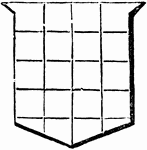
Quarterings
"The Escutcheon is sometimes divided into a great number of parts, in order to place in it the arms…
![Glides are only transitional sounds. They are intermediate to Consonants and Vowels, combining the characteristics of certain central-aperture consonants with the wide or expanded quality of vowels, but differing from vowels in not having a fixed configuration. ...in representing glides the peculiarities of consonants and vowels are blended: the accented fingers, by being straightened, contribute a consonant characteristic; while the second phalanx of the thumb, by being held at an angle to the plane of the palm, imparts to the glide positions the wide, without giving them the firm, quality of vowel positions. <p> Breath-Glide - A transitional aspiration, of organic quality corresponding to that of the adjoining elements [a soft effect of the Consonants, back primary; top primary; Point primary; Lip primary; etc.]. Although this glide has no fixed abiding place, and is of a somewhat variable organic formation, in its effect it is very closely allied to the Throat consonant aspirate, and is therefore represented with a posterior position of the palm and a separation of the index and center fingers, which are characteristic features of Throat positions. This is the only Non-Vocal glide, and hence is the only one in the representation of which the voice phalanx is unaccented.](https://etc.usf.edu/clipart/65900/65914/65914_glide_breath_mth.gif)
Breath-Glide
Glides are only transitional sounds. They are intermediate to Consonants and Vowels, combining the characteristics…
![Glides are only transitional sounds. They are intermediate to Consonants and Vowels, combining the characteristics of certain central-aperature consonants with the wide or expanded quality of vowels, but differing from vowels in not having a fixed configuration. ...in representing glides the peculiarities of consonants and vowels are blended: the accented fingers, by being straightened, contribute a consonant characteristic; while the second phalanx of the thumb, by being held at an angle to the plane of the palm, imparts to the glide positions the wide, without giving them the firm, quality of vowel positions. Voice-Glide – Vowel murmur [a non-syllabic effect of the mid Mixed primary round vowel]. It is a Throat formation, and is shown to be so by the position which represents it.](https://etc.usf.edu/clipart/65900/65915/65915_glide_voice_mth.gif)
Voice-Glide
Glides are only transitional sounds. They are intermediate to Consonants and Vowels, combining the characteristics…

Back-Glide
Glides are only transitional sounds. They are intermediate to Consonants and Vowels, combining the characteristics…
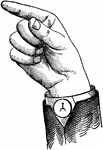
Top-Glide
Glides are only transitional sounds. They are intermediate to Consonants and Vowels, combining the characteristics…

Point-Glide
Glides are only transitional sounds. They are intermediate to Consonants and Vowels, combining the characteristics…

Lip-Glide
Glides are only transitional sounds. They are intermediate to Consonants and Vowels, combining the characteristics…
![Glides are only transitional sounds. They are intermediate to Consonants and Vowels, combining the characteristics of certain central-aperature consonants with the wide or expanded quality of vowels, but differing from vowels in not having a fixed configuration. ...in representing glides the peculiarities of consonants and vowels are blended: the accented fingers, by being straightened, contribute a consonant characteristic; while the second phalanx of the thumb, by being held at an angle to the plane of the palm, imparts to the glide positions the wide, without giving them the firm, quality of vowel positions. <p> Round-Glide – Rounded murmur [a non-syllabic effect of the mid Mixed primary round vowel]. This also is a Throat formation, and is represented by a position which suggests an unrepresented Vocalized Throat Mixed consonant.](https://etc.usf.edu/clipart/65900/65920/65920_glide_round_mth.gif)
Round-Glide
Glides are only transitional sounds. They are intermediate to Consonants and Vowels, combining the characteristics…

Throat-Glide
Glides are only transitional sounds. They are intermediate to Consonants and Vowels, combining the characteristics…

Back Mixed-Glide
Glides are only transitional sounds. They are intermediate to Consonants and Vowels, combining the characteristics…

Top Mixed-Glide
Glides are only transitional sounds. They are intermediate to Consonants and Vowels, combining the characteristics…

Point Mixed-Glide
Glides are only transitional sounds. They are intermediate to Consonants and Vowels, combining the characteristics…

Lip Mixed-Glide
Glides are only transitional sounds. They are intermediate to Consonants and Vowels, combining the characteristics…
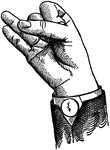
Indicated High Primary Back Glide
Glides are only transitional sounds. They are intermediate to Consonants and Vowels, combining the characteristics…

Indicated High Primary Top Glide
Glides are only transitional sounds. They are intermediate to Consonants and Vowels, combining the characteristics…

Indicated High Primary Point Glide
Glides are only transitional sounds. They are intermediate to Consonants and Vowels, combining the characteristics…

Indicated High Primary Lip Glide
Glides are only transitional sounds. They are intermediate to Consonants and Vowels, combining the characteristics…

Indicated High Wide Back Glide
Glides are only transitional sounds. They are intermediate to Consonants and Vowels, combining the characteristics…

Indicated High Wide Top Glide
Glides are only transitional sounds. They are intermediate to Consonants and Vowels, combining the characteristics…
